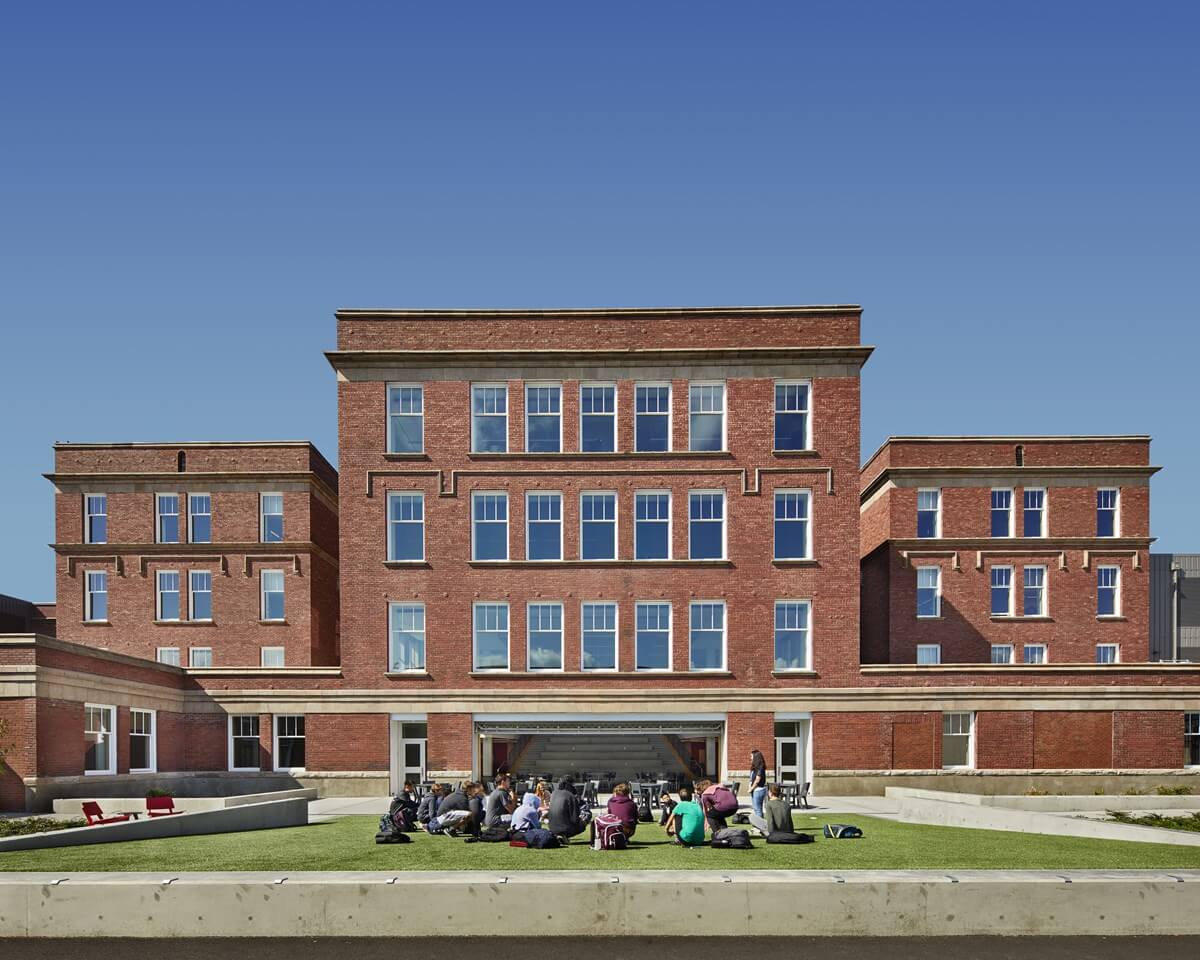The Influence of Institution Environments on Academic Success and Personal Well-Being
The style of educational areas, consisting of natural illumination and ergonomic furniture, can enhance students' concentration and convenience. Just how can schools strategically improve these elements to better sustain their students?
Physical Layout and Layout
Exactly how does the physical layout and design of an institution effect academic success? The plan and aesthetic of an institution setting can considerably affect pupils' knowing results. A well-designed school design promotes ease of movement, reduces distractions, and promotes a feeling of safety and security and belonging. For circumstances, broad corridors and clearly significant locations assist in smooth shifts between courses, decreasing lateness and disruption. In addition, tactically put usual locations encourage social communications, which are vital for social and psychological advancement.
All-natural lights and efficient ventilation systems are critical in boosting cognitive feature and decreasing absence. Research studies have actually shown that classrooms with adequate all-natural light enhance pupil concentration and minimize feelings of drowsiness. Moreover, ergonomic furniture customized to trainees' requirements can protect against physical discomfort, enabling prolonged emphasis and involvement in scholastic tasks.
Accessibility to exterior areas and cosmetically pleasing surroundings additionally play a vital duty - Save Temecula Schools. Green rooms and properly maintained institution grounds provide possibilities for exercise and mental relaxation, both of which are essential for keeping high levels of scholastic performance. In essence, a thoughtfully designed physical atmosphere can function as a driver for scholastic quality, promoting an ambience that supports both mentor and discovering
Class Ambience
A favorable classroom ambience is fundamental to achieving academic success. An environment that cultivates a sense of safety, inclusivity, and common regard motivates trainees to involve even more proactively in their learning processes. The setting of a class, consisting of aspects such as lights, sound degrees, and seating setups, can dramatically influence pupil focus and inspiration. A well-ventilated, well-lit class with marginal interruptions can improve cognitive function and minimize stress and anxiety, therefore advertising better scholastic outcomes.
Furthermore, the classroom environment must sustain a culture of collaboration and open communication. When trainees feel comfy sharing their ideas and asking inquiries, they are more probable to engage deeply with the material and develop vital assuming skills - Save Temecula Schools. Peer interactions and group tasks can improve understanding by cultivating and offering diverse viewpoints synergy
Furthermore, establishing clear expectations and consistent regimens can develop a structured environment that enables pupils to concentrate on their research studies. By minimizing unpredictability and providing a predictable structure, students can better manage their time and obligations. Inevitably, a positive classroom atmosphere not just boosts academic performance however likewise adds to the total health of pupils, preparing them for future academic and personal endeavors.
Teacher-Student Relationships
Building on the relevance of a favorable classroom ambience, the connections in between pupils and teachers play an essential function in shaping scholastic success. A healthy teacher-student relationship cultivates a discovering environment where students really feel valued, recognized, and supported, which dramatically boosts their motivation and engagement. When pupils perceive their instructors as approachable and understanding, they are more probable to take part proactively in course and seek help when needed, adding to a much deeper Check This Out understanding of the topic.
This trust enables trainees to reveal their concepts and problems freely, promoting a collaborative understanding setting. In essence, strong teacher-student relationships are a keystone of academic success, playing an important role in both scholastic accomplishment and personal advancement.
Peer Interactions
Peer communications significantly affect academic success by shaping a pupil's cognitive and social development. Positive peer communications can boost a student's inspiration and interaction in scholastic tasks with joint knowing and common support.

Efficient peer interactions likewise add to the development of read vital life abilities, such as problem, communication, and teamwork resolution. These social proficiencies are vital for both academic success and individual health, emphasizing the significance of cultivating positive peer characteristics within the college atmosphere.
Extracurricular Tasks
Engaging in extracurricular activities plays a crucial function in a trainee's academic success and personal growth. Research study consistently shows that students who participate in extracurricular tasks have a tendency to attain higher scholastic performance.
Moreover, extracurricular participation promotes a feeling of belonging and neighborhood, which is vital for individual health. Taking part in team activities permits trainees to build and enhance socials media, boosting their psychological and social intelligence. These interactions are critical for creating social abilities that are useful in both scholastic and future expert environments.
Additionally, after-school activities offer a useful electrical outlet for pupils to discover their interests and interests beyond the standard educational program. This exploration can bring about the discovery of new skills and prospective job paths, further motivating pupils to involve more deeply in their academic job. In final thought, the role of extracurricular tasks prolongs beyond simple recreation; they are integral to promoting an alternative educational experience that advertises both academic success and individual growth.
Conclusion
Attentively made physical designs and class, along with favorable teacher-student relationships and useful peer interactions, significantly improve trainee motivation and engagement. These elements jointly emphasize the importance of developing and preserving optimum college environments for the benefit of trainees' scholastic and personal growth.
Eventually, a positive classroom environment not only enhances scholastic performance however additionally adds to the general health of trainees, preparing them for future educational and individual endeavors.

Comments on “The Relevance of Neighborhood Assistance to Save Temecula Schools Today”